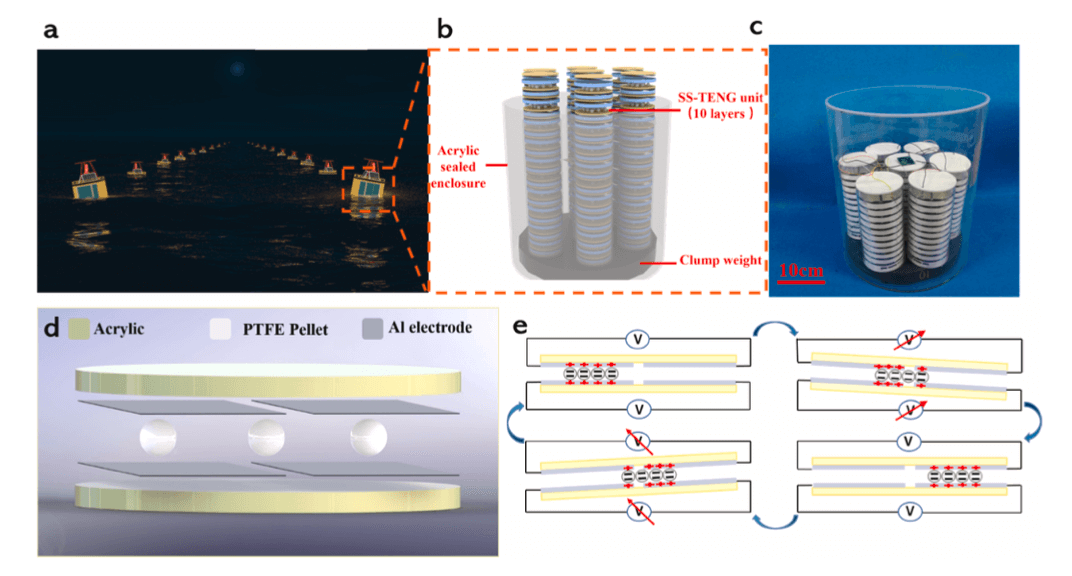Abstract
Powering marine distributed buoys sustainably and cost-efficiently has always been challenging in the ocean environment. Triboelectric nanogenerators (TENG), thanks to their robustness, high efficiency and low cost in energy harvesting, has provided a novel solution to the long-term electrical power supply for a series of distributed systems (including buoys). In this study, a wave energy harvesting sandwich-like TENG (S-TENG) has been proposed. In the on-land forced motion experiments, the S-TENG yields much superior performances compared to previous tower-like TENG in terms of the power density. The studies also reveal that the electrical output increases linearly even with larger number of parallel connected S-TENG layers. Consequently, a buoy integrated with 7 parallel connected S-TENGs is studied through systematic wave basin experiments and the relevance of most hydrodynamic parameters (including wave height, frequency, direction as well as mooring system) have been revealed. The presented wave basin experiments are original in wave energy harvesting TENG research practice and prove to be very helpful in that they simulate the most close-to-real ocean environments in the lab. The studies are concluded with a 12 W high-brightness LED lit up on a navigation supporting buoy. This study has set a benchmark of achieving self-powered buoy with TENG, which can be extended to other marine distributed systems such as sensors and small robotics.

